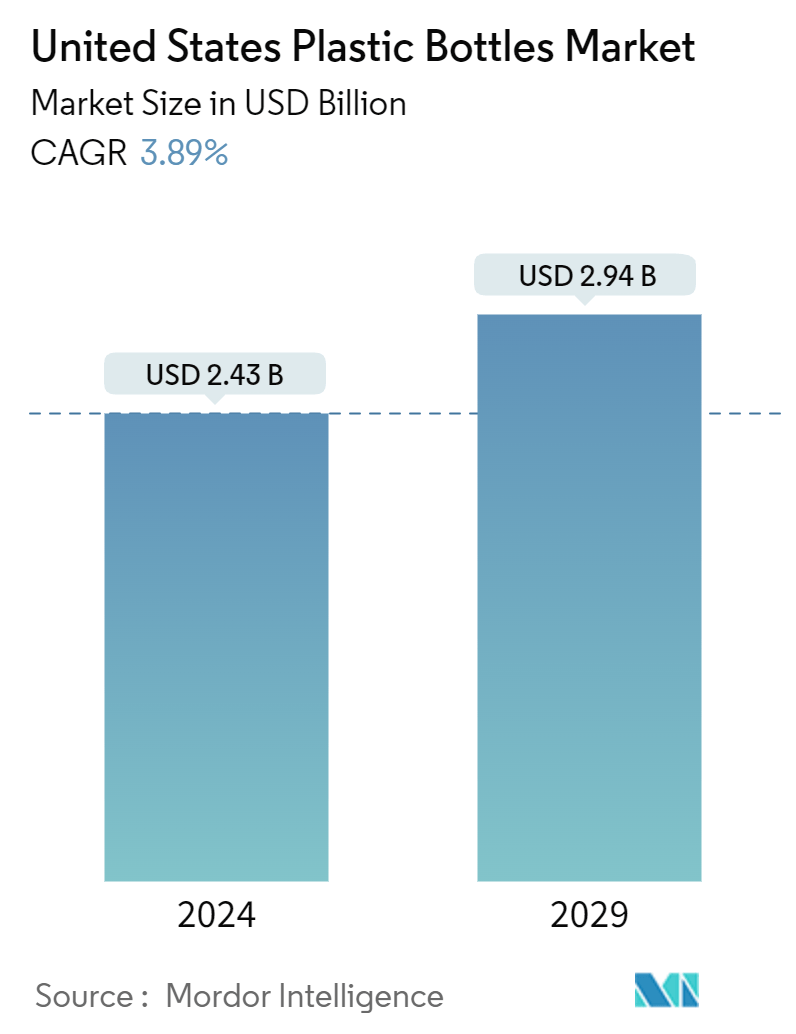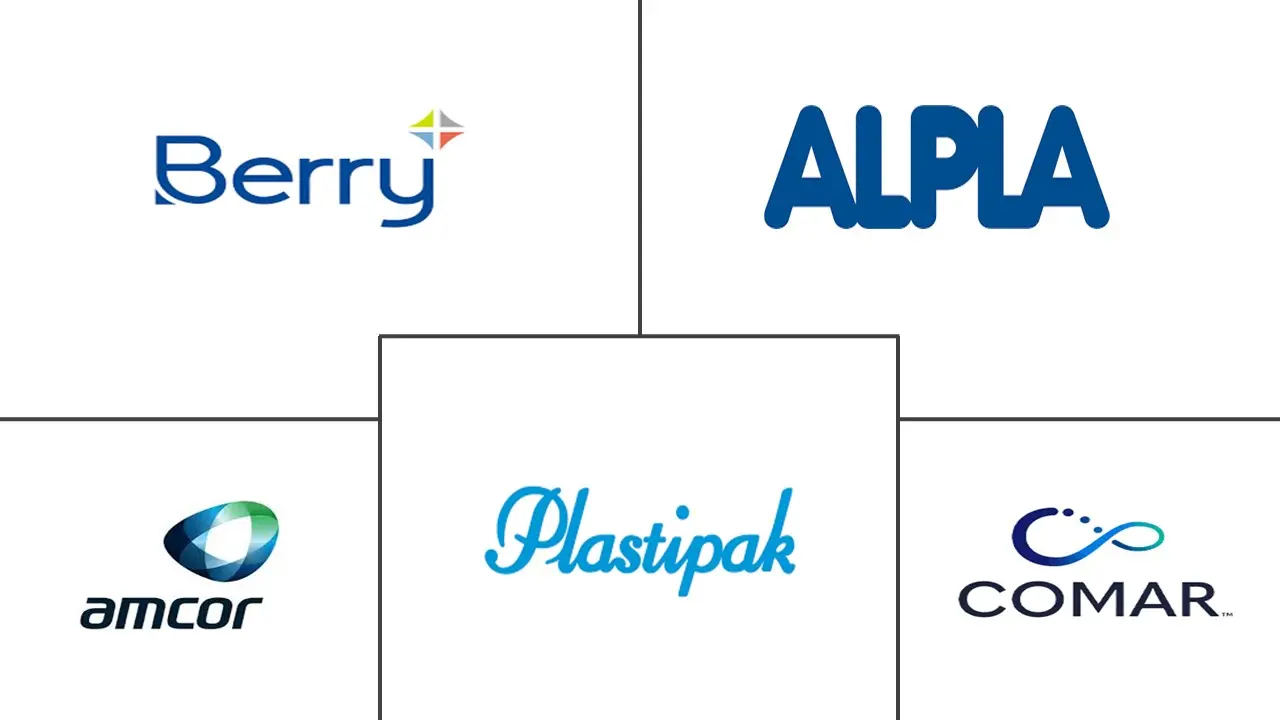Market Size of United States Plastic Bottles Industry

| Study Period | 2019 - 2029 |
| Base Year For Estimation | 2023 |
| Market Size (2024) | USD 2.43 Billion |
| Market Size (2029) | USD 2.94 Billion |
| CAGR (2024 - 2029) | 3.89 % |
| Market Concentration | Low |
Major Players
*Disclaimer: Major Players sorted in no particular order |
United States Plastic Bottles Market Analysis
The United States Plastic Bottles Market size is estimated at USD 2.43 billion in 2024, and is expected to reach USD 2.94 billion by 2029, growing at a CAGR of 3.89% during the forecast period (2024-2029). In terms of production volume, the market is expected to grow from 2.60 million tonnes in 2024 to 3.10 million tonnes by 2029, at a CAGR of 3.63% during the forecast period (2024-2029).
Plastic bottles made of polyethylene terephthalate, polypropylene, polyethylene, etc., are widely used as they are lightweight and unbreakable, making handling easier. The cost-effectiveness and dependence on packaged, processed food and beverages will influence the plastic bottle market during the forecast period.
- Consumers are increasingly favoring bottled drinks over canned ones, primarily due to cost-effectiveness. The country's consumers swiftly gravitate towards healthier beverage options, with bottled water leading the charge. The beverage segment in the country is witnessing significant growth, driven by a surge in athleticism, heightened health consciousness, and evolving dietary habits linked to lifestyle changes.
- Plastic bottle recycling is growing as manufacturers are concerned about the environmental impact and are encouraging plastic recycling. According to a United Nations Environment Programme(UNEP) report, increasing recycling could reduce plastic pollution by 20% by 2040 after pursuing efforts such as eradicating problematic and unnecessary plastics. Therefore, recycling plastic bottles is expected to positively impact the market.
- Moreover, closed-loop recycling is identified as a cycle in which plastic is reprocessed, and the recyclate produced is used to make another product in the same product category. This method is widely accepted for PET and HDPE milk bottles, allowing companies to use it as a preferred option over other resin types.
- In May 2023, the Closed Loop Partners Association announced a USD 10 million investment in its Closed Loop Circular Plastics Fund from the Japanese multinational banking services institution Sumitomo Mitsui Banking Corporation (SMBC). The partnership aims to advance the recovery and recycling of polyethylene (PE) and polypropylene (PP) plastics in the United States.
- Rising disposable incomes and urbanization are fueling market value growth. The market is also energized by evolving consumer lifestyles and the burgeoning retail sector. Furthermore, the growth rate is anticipated to be amplified by increasing awareness of eco-friendly and biodegradable packaging materials and a surging demand for packaged and processed products.
- Plastic stands out as a significant pollutant driving environmental degradation. Notably, plastic bottles are pivotal in this pollution, impacting oceans and landfills. Their production is resource-intensive, drawing heavily on fossil fuels and water. The Container Recycling Institute highlights a concerning statistic: 86% of disposable water bottles in the U.S. end up as waste, contributing to a staggering 38 billion bottles in landfills. Furthermore, bottling water annually emits a significant 2.5 million tons of carbon dioxide into the atmosphere.

